Inside Hillwood Estate, a 26,000-square-foot mansion and home of the millionaire businesswoman who built Mar-a-Lago
Talia Lakritz

- Hillwood Estate was the home of breakfast-cereal heiress Marjorie Merriweather Post.
- She collected art from 18th-century France and imperial Russia for display in her 36-room mansion.
Marjorie Merriweather Post was once known as America's richest woman, with an estimated net worth of $250 million — around $1.8 billion today when adjusted for inflation.
She inherited her father's Post cereal fortune in 1914, but Post helped build the company into the General Foods Corporation by acquiring brands like Jell-O and Maxwell House. She also served on its board of directors.
With her success as a businesswoman, socialite, and philanthropist, Post built homes to match her elite status.
In 1955, she purchased Hillwood Estate in Washington, DC, and renovated it into a 36-room, 26,000-square-foot mansion with a focus on entertaining and displaying her priceless art collections.
Post only lived at Hillwood during fall and spring. She spent winters at her Mar-a-Lago estate in Palm Beach, Florida, which is now owned by former President Donald Trump, and summers at Camp Topridge in New York's Adirondack Mountains.
Access to Mar-a-Lago remains limited due to Trump's residence there, but Hillwood is a museum open to the public.
Take a look inside Post's opulent home and its surrounding gardens.
Hillwood is a 36-room Georgian-style mansion located on a 25-acre estate in Washington, DC.
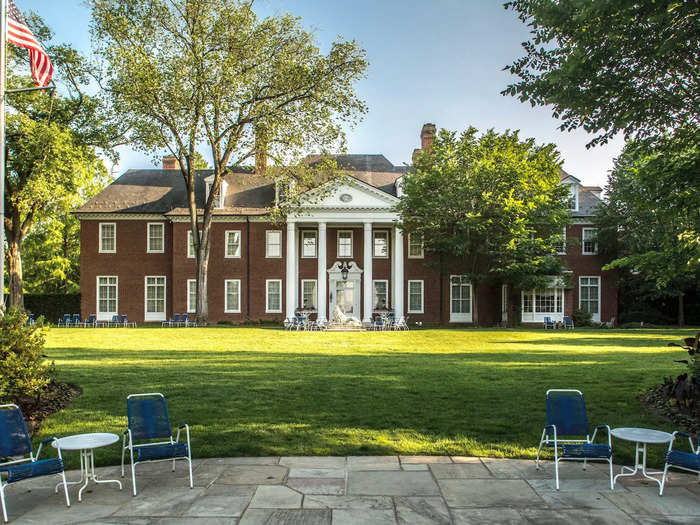
Hillwood's interiors and gardens first opened to the public in 1977, then reopened in 2000 after extensive renovations. One adult ticket can be purchased with a $15 suggested donation on weekdays and $18 on weekends through Hillwood's official website.
Hillwood offers self-guided tours through its Hillwood app as well as guided tours throughout the day.
Marjorie Merriweather Post, heiress to the Post cereal fortune and known as America's richest woman, purchased Hillwood in 1955.
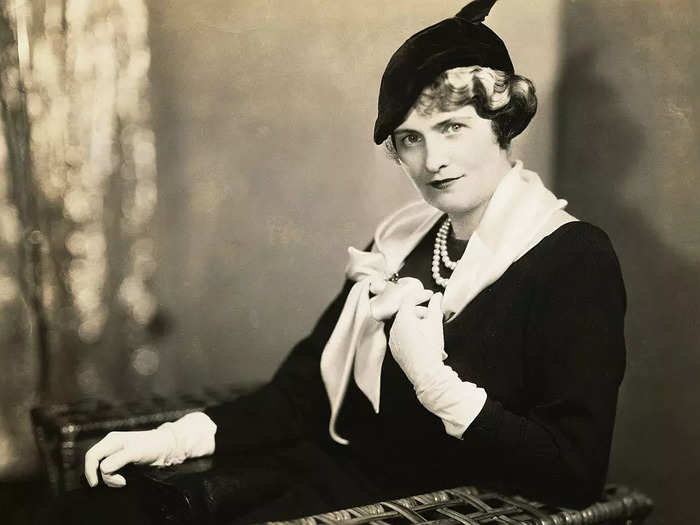
Post's father, CW Post, founded the Postum Cereal Company in 1895. When he died in 1914, Post took ownership of the $20 million company at 27 years old. She helped grow the cereal company into the General Foods Corporation and served on its board for over 20 years, becoming one of the first women in America to serve on a corporate board of directors.
Post was married and divorced four times and had three children: Dina Merrill, Eleanor Post Hutton, and Adelaide Breevort Close. She bought Hillwood after divorcing her third husband, Joseph Edward Davies.
My tour of Hillwood began in the entry hall full of art from 18th-century France and imperial Russia, Post's two main areas of interest as a collector.
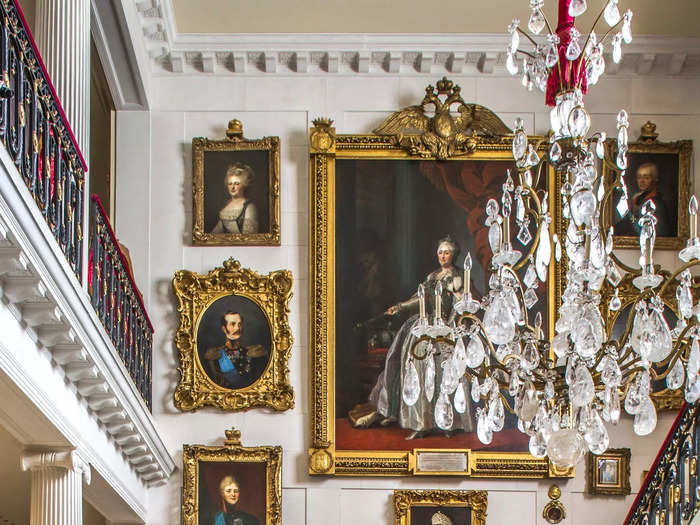
Portraits of the Romanovs, the Russian dynasty that ruled from 1613 to 1917, hung above the grand staircase, and a marble bust depicted the Duchesse de Châteauroux, one of King Louis XV's mistresses.
Post devoted entire rooms to her collection of French and Russian porcelain.
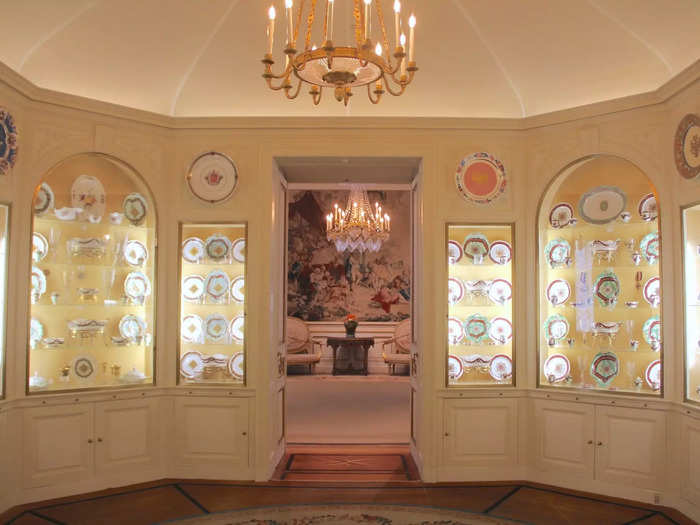
Post intended for Hillwood to become a museum open to the public, and had display cases built in almost every room on the first floor.
The French Drawing Room would not have looked out of place in the Gilded Age.
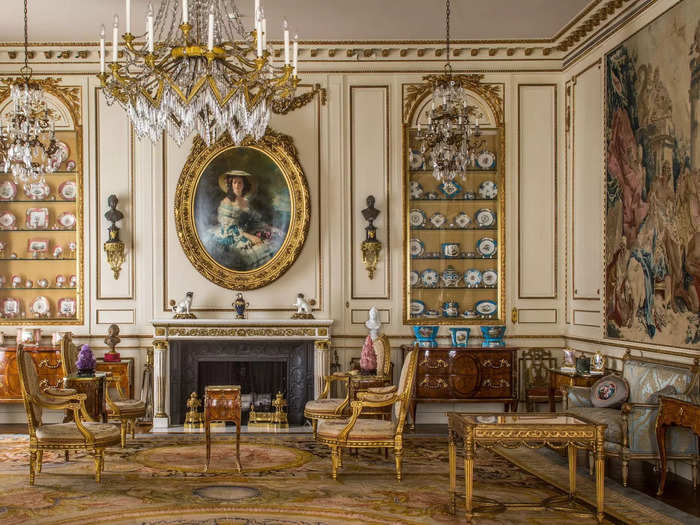
The room's gilded wood paneling and fireplace mantle came from King Louis XVI-era homes in Paris.
Post used the French Drawing Room as a reception area to greet guests as they arrived for her dinners and garden parties.
A hallway led into the Pavilion, Post's primary entertaining space where she hosted film screenings and square dances.
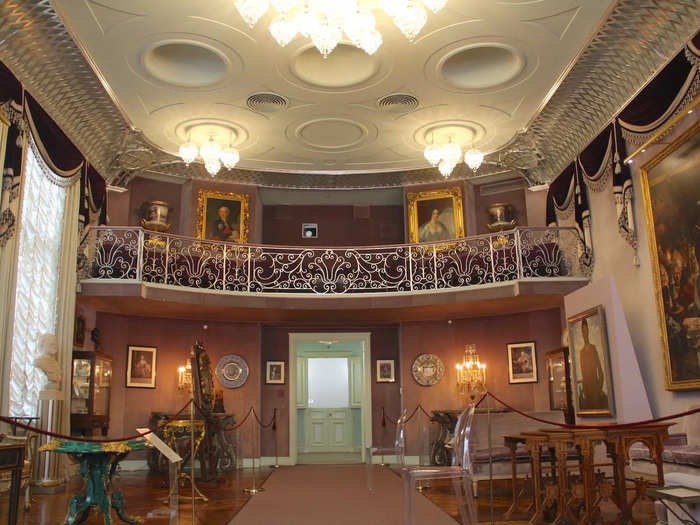
The Pavilion was equipped with a projector and sound system for movie screenings, and the walls were covered in velvet for better acoustics.
Post had trays added to the lilac sofas so that guests could enjoy drinks and snacks while watching movies such as "The Jungle Book."
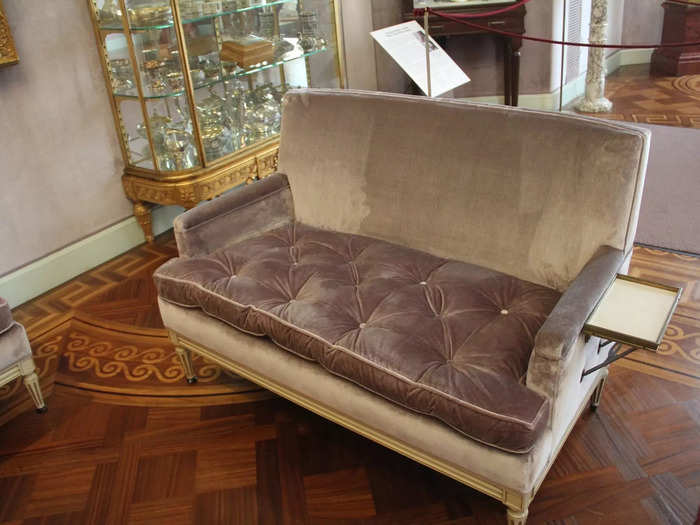
Staff members served drinks in a wet bar located just outside the Pavilion.
The Pavilion also featured priceless works of art such as "A Boyar Wedding Feast" by Konstantin Makovsky.
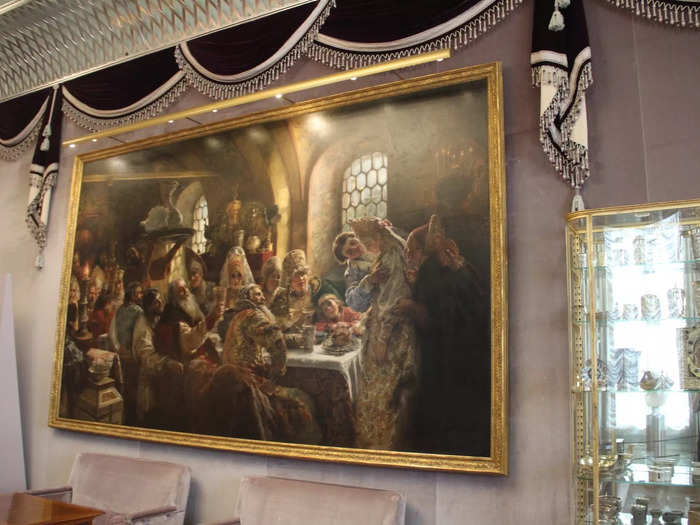
Painted in 1883, "A Boyar Wedding Feast" is one of the most famous Russian paintings in existence. It depicts a wedding between two noble Russian families as it would have looked in the 16th and 17th centuries.
The Icon Room displayed around 400 pieces of art connected to the Russian Orthodox Church.
Post called the Icon Room her "treasury."
The centerpieces of the Icon Room were two gold and diamond-encrusted eggs made by Fabergé, a jeweler catering to Russian imperial rulers.
Both eggs were gifts from Tsar Nicholas II to his mother, Maria Feodorovna.
Another notable piece was a Fabergé music box commissioned by Prince Feliks and Prince Nikolai Yusupov in 1907.
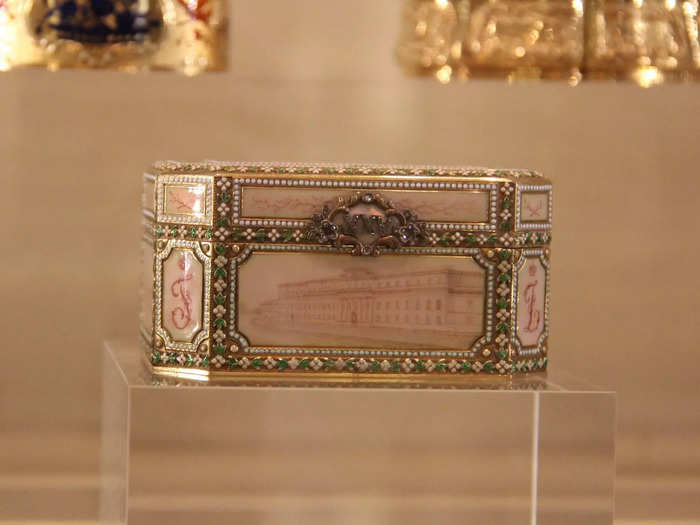
The Yusupov princes gifted the music box to their parents for their 25th anniversary. The building shown on the front is Moika Palace, best known as the site where Gregori Rasputin was killed in 1916.
The Library on the first floor evoked 18th-century England with pine paneling and a marble mantle.
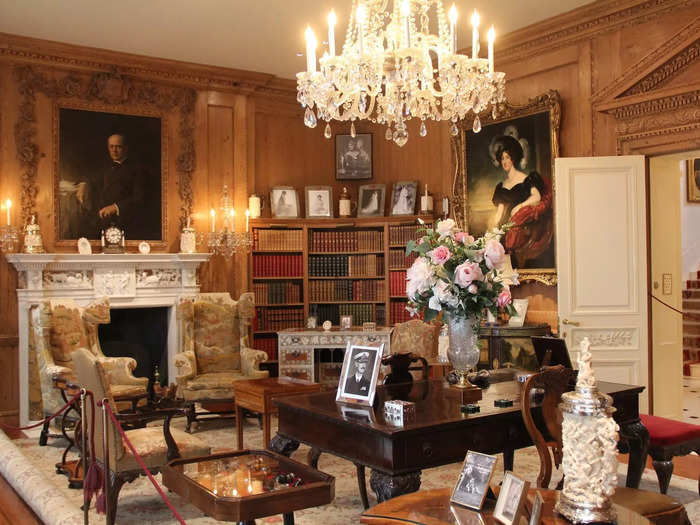
Post used the Library as a smaller gathering space with friends or to read and relax on her own. A portrait of her father, CW Post, hung above the fireplace.
In the Dining Room, waiters would serve multiple courses at elaborate dinner parties.
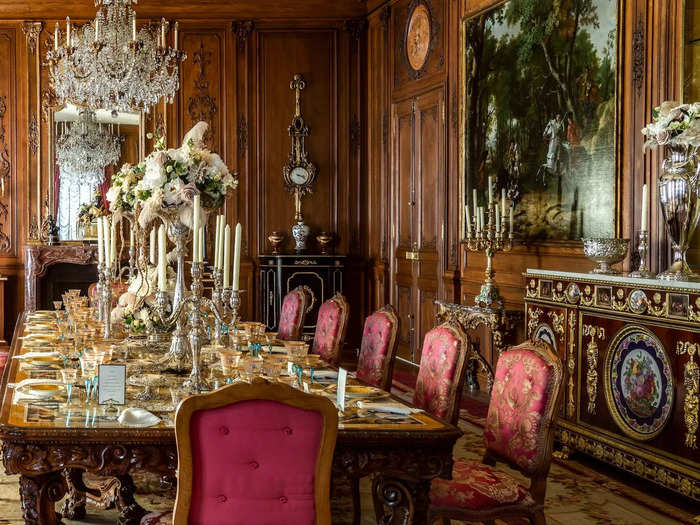
The oak paneling on the walls in the Dining Room came from an 18th-century home in Paris, and the walls featured Dutch paintings of hunting scenes.
The dining room table, handcrafted in Italy with 11 semiprecious stones, was originally designed for Mar-a-Lago.
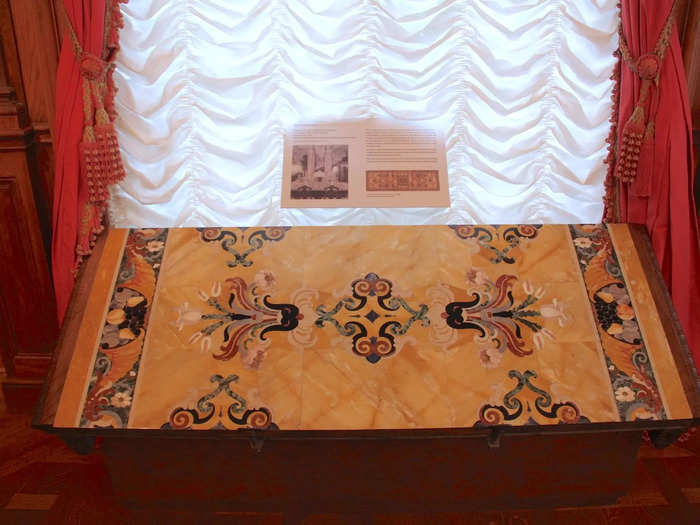
The table could seat over 30 people. A leaf from the table was displayed separately to allow visitors to get a closer look.
The table was set with Post's rare collection of 18th-century French porcelain.

The porcelain dishware was originally made in France for European aristocrats in the 1740s and later collected by wealthy art enthusiasts such as Post and the Rothschilds.
In a nook off the Dining Room, Post took meetings and business lunches as the majority shareholder of the General Foods Corporation.
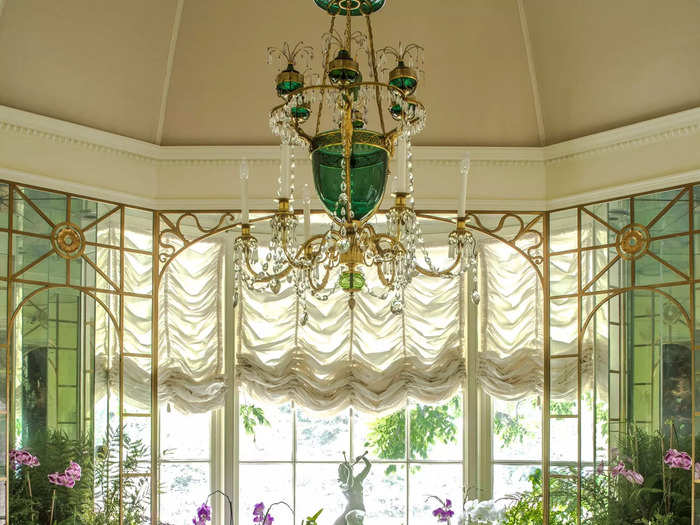
While the enclave is called the Breakfast Room, Post usually ate lunch and dinner there.
The rest of the house was furnished with period decor, but the kitchen was state-of-the-art for the 1950s.
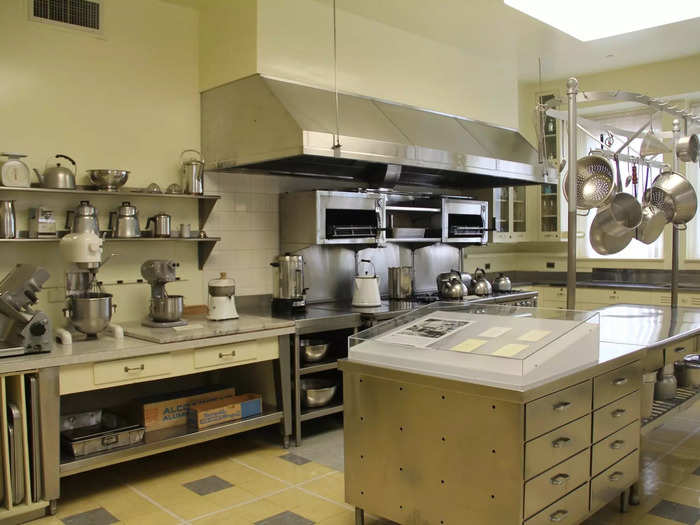
The kitchen didn't have a dishwasher because all of Post's dishes had to be washed by hand.
The butler's pantry was always stocked with General Foods brands such as Maxwell House coffee and Birds Eye frozen food.
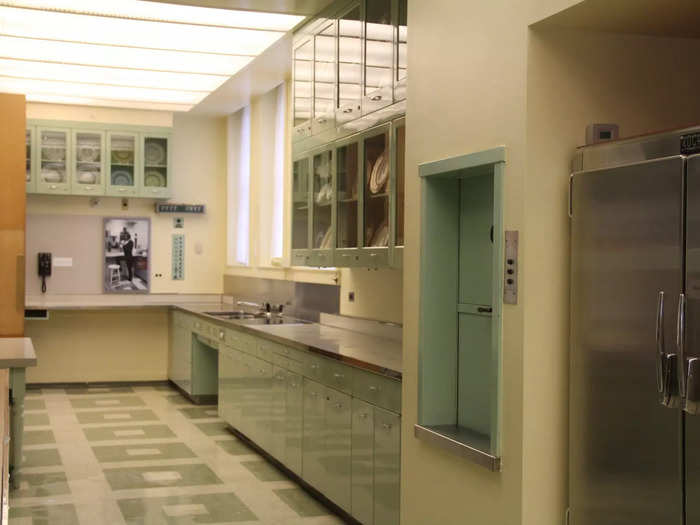
The butler's pantry also featured a dumbwaiter for transporting Post's porcelain and glass dishware to and from storage in the basement.
Menus on display in the kitchen revealed what Post served for dinner.
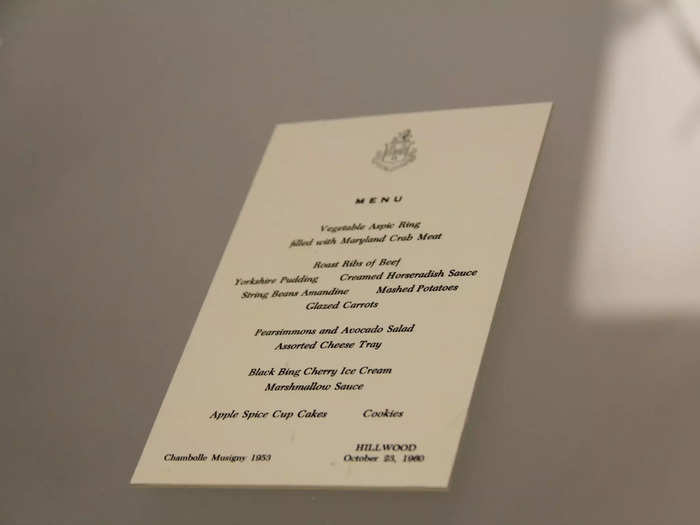
Jell-O, a General Foods brand, made appearances at Post's dinner parties in the form of aspic rings and gelatinous salads, a popular food trend in the 1950s.
On my way upstairs, I noticed that the railing was covered in velvet, a luxurious feature I also saw when I toured a Vanderbilt mansion in New York.
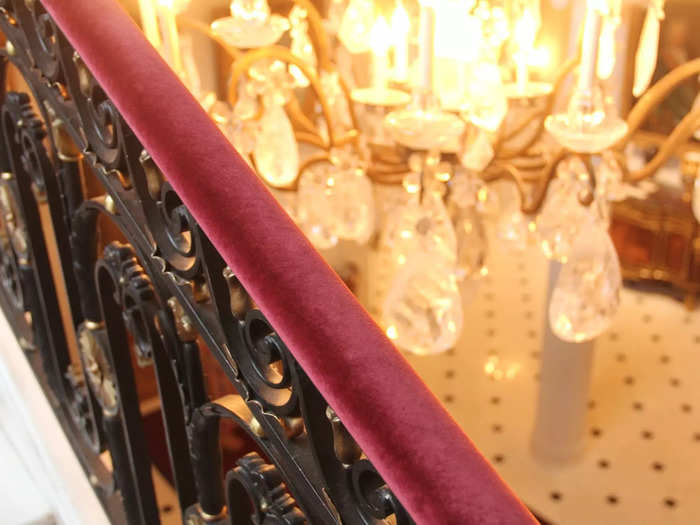
The Vanderbilt family's 54-room mansion in Hyde Park, New York, also featured a grand staircase with a velvet-covered railing.
The first room at the top of the stairs was known as the Snooze Room.
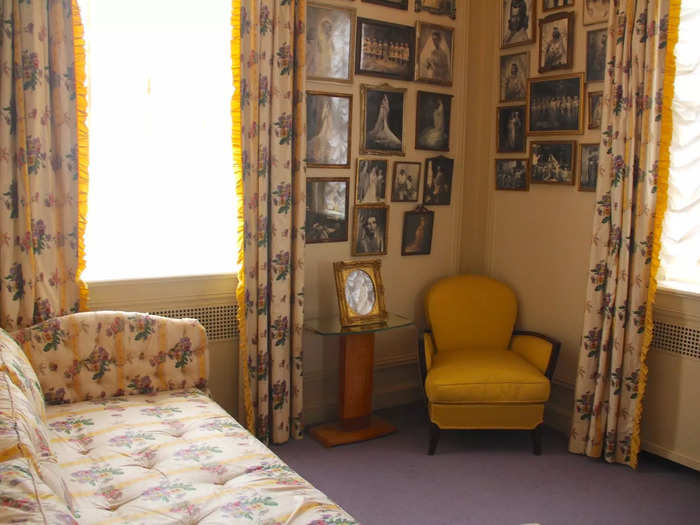
True to its name, the Snooze Room included a daybed for midday naps.
The Snooze Room connected to the English Bedroom Suite through a doorway.
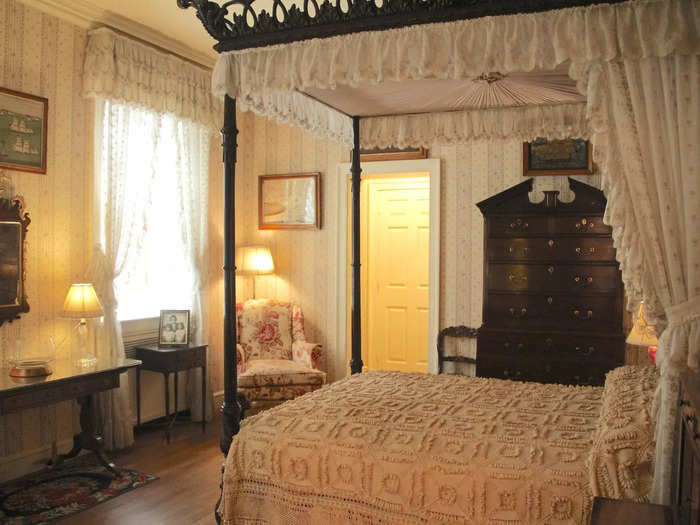
The English Bedroom, named for its 19th-century English furniture set, served as a guest room when Post's daughters visited Hillwood.
The Adam Bedroom Suite was named for its Adam style of decor featuring pastel colors and medallion designs.
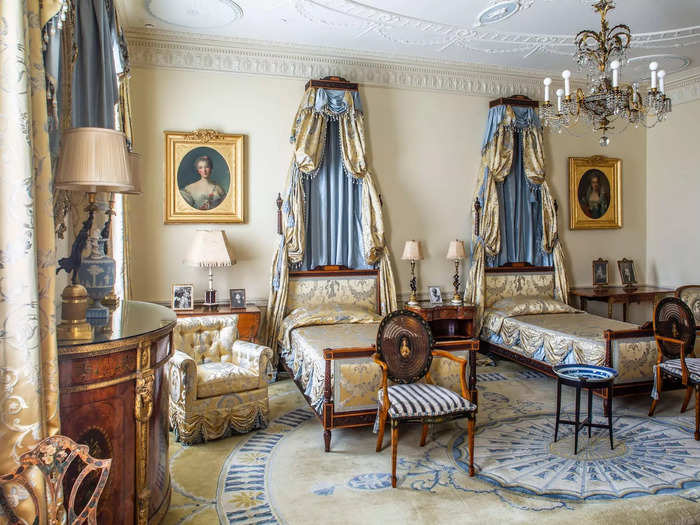
The Adam style, popular in the late 18th and early 19th centuries, was coined by Robert and James Adam, who were architects and designers from Scotland.
The Adam Bedroom Suite also functioned as a guest bedroom.
The second floor featured a library smaller than the one on the first floor, but decorated in a similar style with wood paneling and portraits.
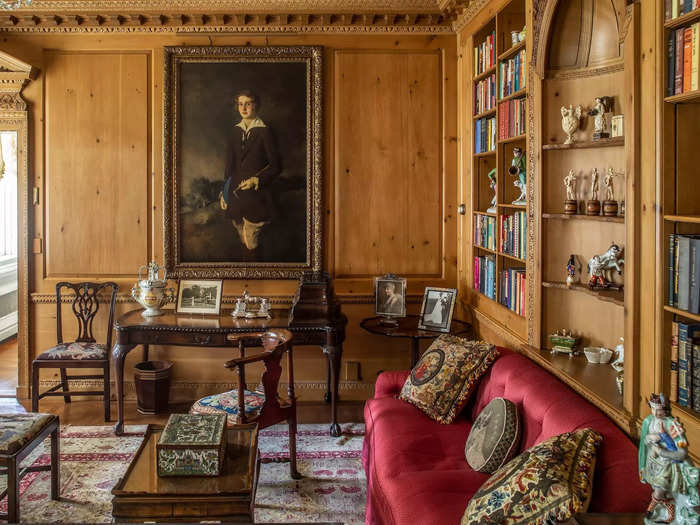
The second-floor library housed a television, a touch of modernity amid the English country house aesthetic.
Post's bedroom was full of French furnishings and paintings of her children.

A display case held around 50 items made from bloodstone, Post's birthstone.
In the adjoining dressing room, Post would often attend to paperwork related to her role on the General Foods board or philanthropy.
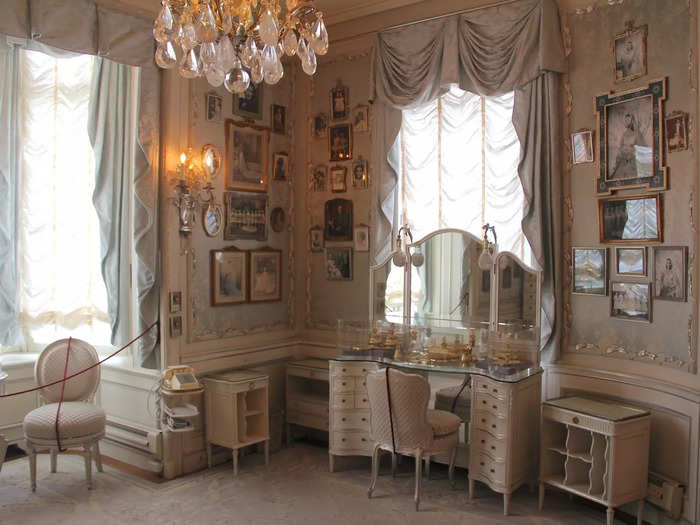
"She took her various board duties seriously, and she planned her schedule, whenever possible, around those duties," Post's financial secretary, Betty Canella, said of her boss according to the audio tour.
Her bathroom was decorated with "Mamie pink," a color popularized by first lady Mamie Eisenhower in the 1950s.
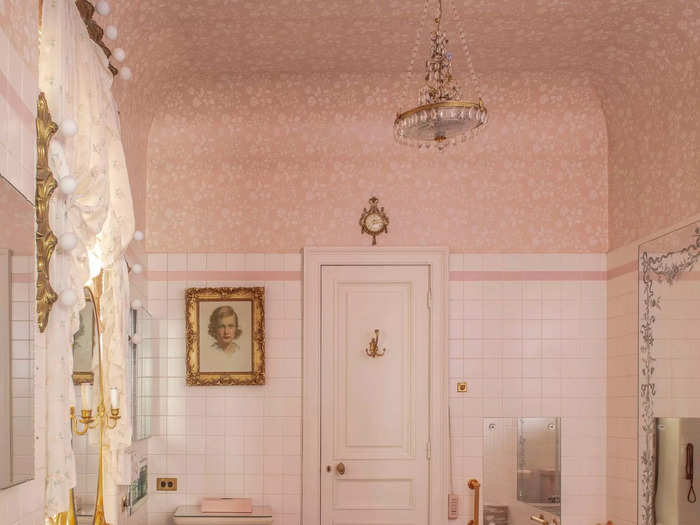
Call buttons by the bathtub allowed Post to summon a maid, social secretary, or seamstress.
The hallway leading to Post's closet displayed pieces of her jewelry.
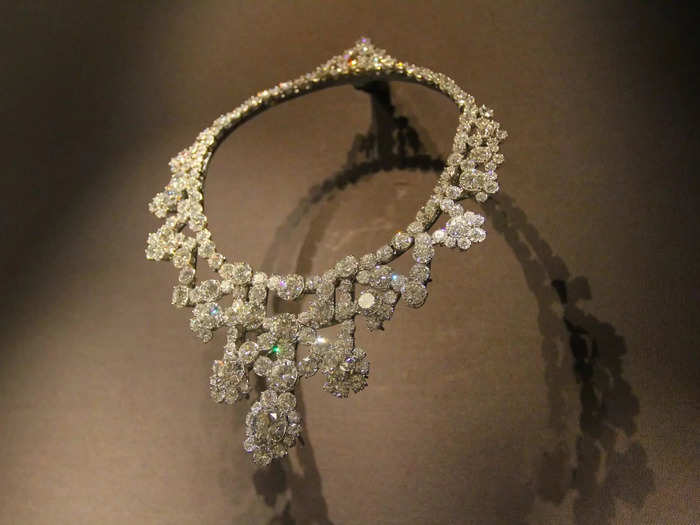
This platinum and diamond necklace was designed by jeweler Harry Winston.
The display also featured a diamond from an engagement ring given to her by Herbert May, her fourth husband, in 1958.
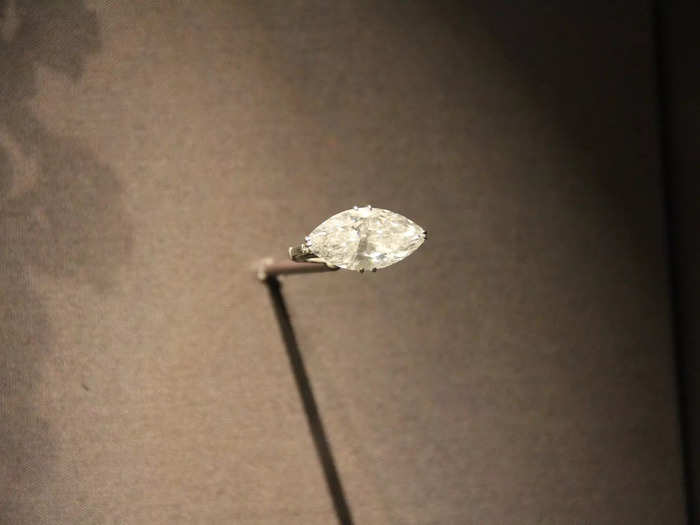
Diamond engagement rings were a relatively new phenomenon at the time — the De Beers advertising campaign that popularized diamonds in connection with engagements and weddings ran in the 1940s.
Post and May were married for six years, divorcing in 1964.
My final stop inside Hillwood was the Second Floor Gallery displaying particularly notable and valuable works from Post's art collection.
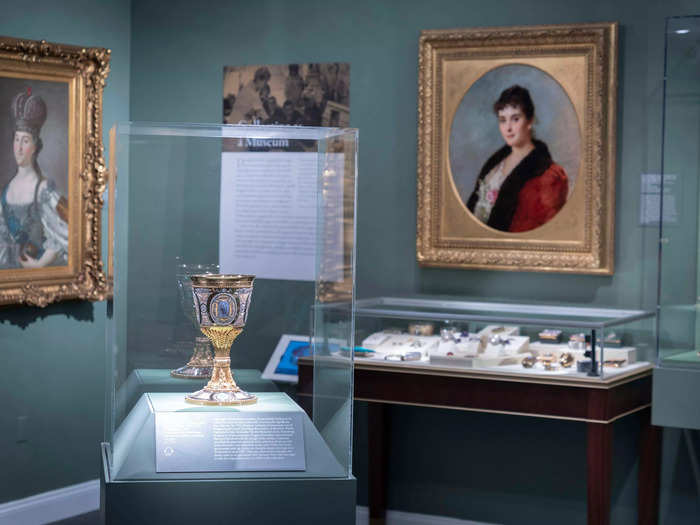
Among the gallery's many artifacts was the Buch Chalice commissioned by Catherine the Great in 1790. The gold goblet, used in religious rituals, featured 5,492 diamonds totaling 152.11 carats, according to Hillwood's official website.
There was much more to see outside the home with the estate's 25 acres of gardens.
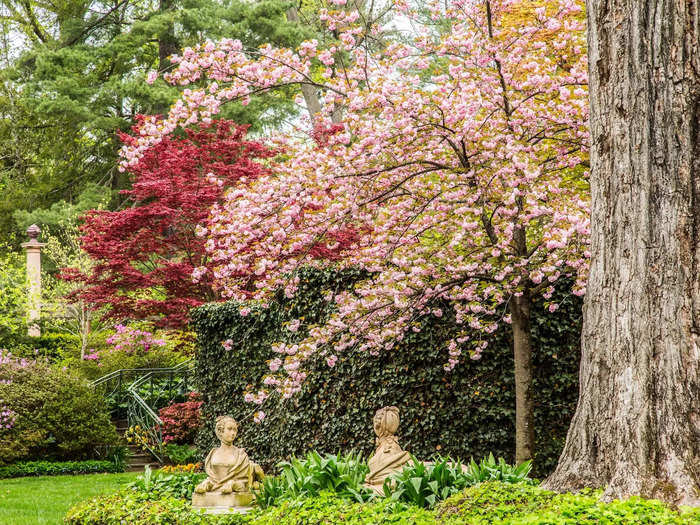
The Hillwood app featured a separate self-guided tour just for the gardens.
The side of the house featured a French parterre, a formal garden design dating back to the 17th and 18th centuries.
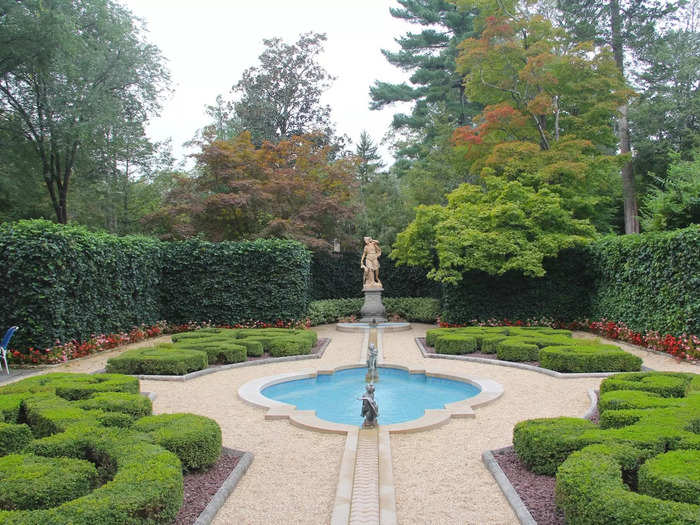
The French Drawing Room inside led out into this garden, with the English ivy walls making it feel like another room. Paths of water called rills divided the space and led to a statue of Diana, the goddess of the hunt, on the other side.
The top of the Washington Monument was just visible through the trees on the Lunar Lawn in the back of the house.
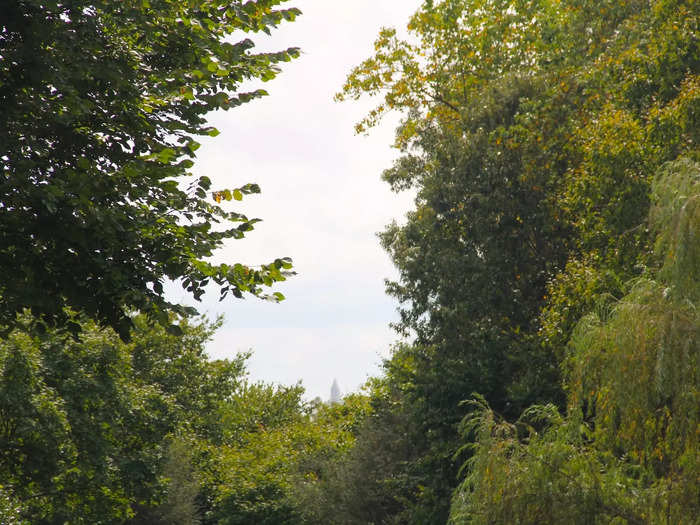
The Lunar Lawn, named for its half-moon shape, was dotted with elms, false cypresses, and various flowers.
The Japanese-style garden was designed by landscape architect Shogo Myaida in 1957.
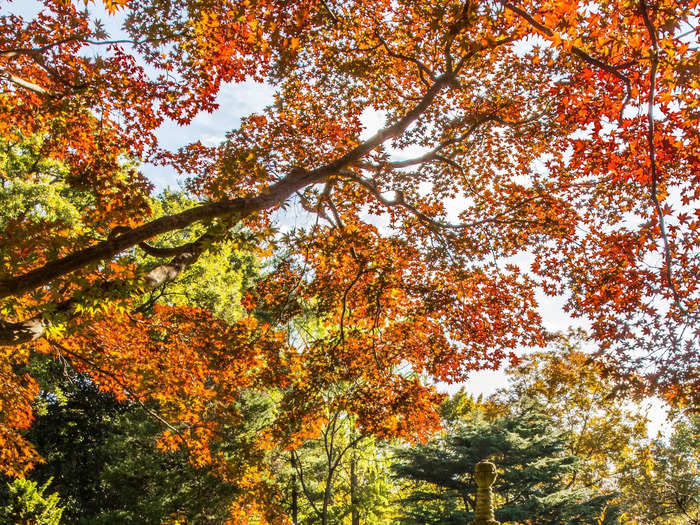
Visitors could step across the pool of water on a path of millstones.
The Greenhouse still housed Post's collection of tropical plants, including over 2,000 orchids.
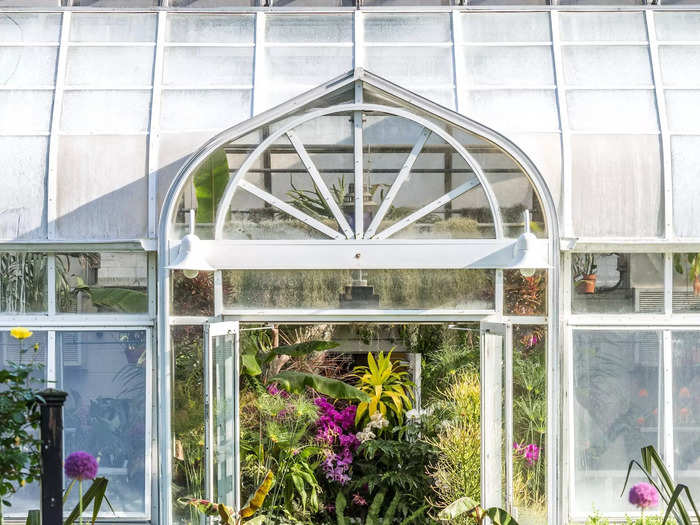
The Greenhouse allowed Post to enjoy fresh flowers at Hillwood year-round. She even had fresh flowers shipped from Hillwood to Mar-a-Lago and Camp Topridge.
I noticed numerous butterflies as I walked around the grounds, likely attracted by the sweet floral smell of the property's many blossoms.
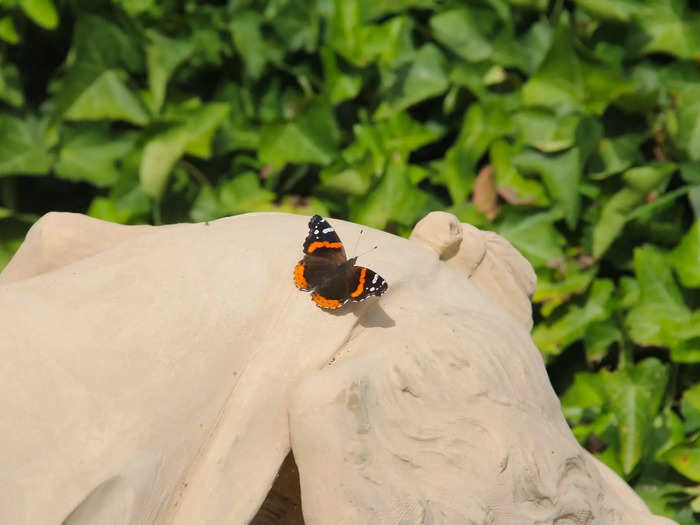
In addition to the Greenhouse, Hillwood also had a cutting garden that supplied seasonal floral arrangements.
My final stop was the Rose Garden, where Post's ashes were spread after her death in 1973.
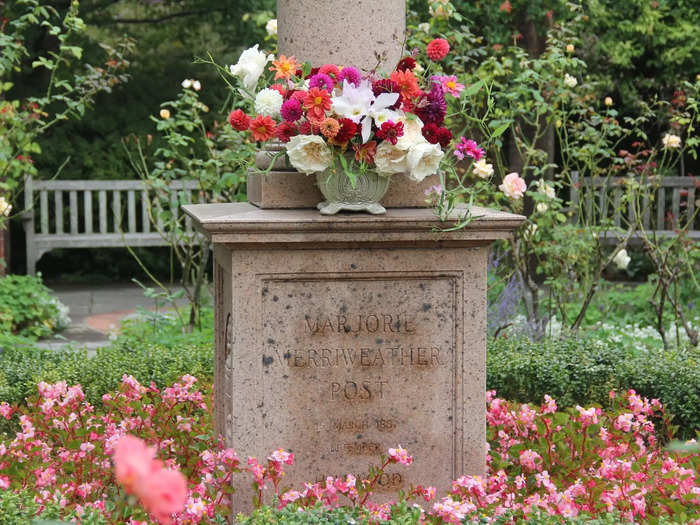
Every year, on her birthday and death anniversary, Hillwood puts a bouquet of fresh flowers on the memorial in the Rose Garden. I visited on September 13, which happened to be the day after her death anniversary, so the flowers on the monument still appeared fresh.
Located just 5 miles from the heart of Washington, DC, Hillwood is an art museum and botanical garden wrapped up in one historic home.
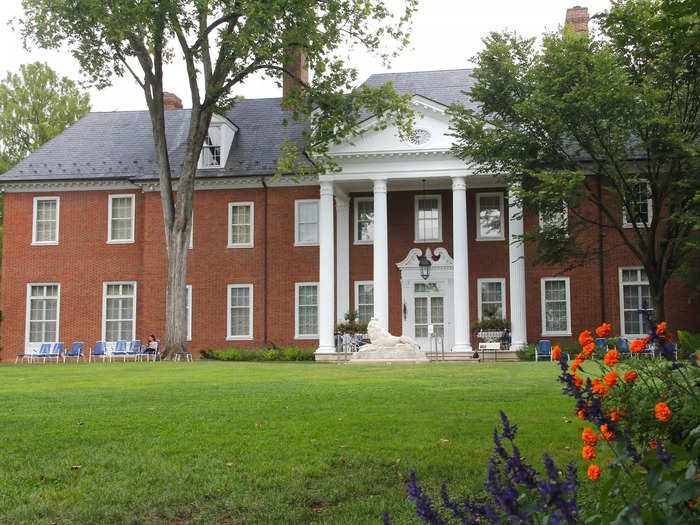
It's not often that one gets to look inside the home of a modern businesswoman who was one America's wealthiest figures, but Post always intended for Hillwood to welcome members of the public.
She often hosted school groups and educational events during her lifetime to allow people to view her art collections, and her legacy continues today through the museum and gardens at Hillwood Estate.
Popular Right Now
Popular Keywords
Advertisement